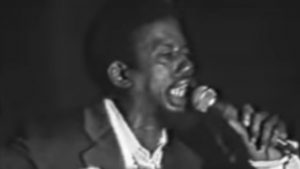Junior high schools were established in 1909, as a transition point for students between elementary and high school. Junior highs were established primarily to track student academic progress, enabling administrators to either send students to high school for two specific and primary purposes – either to pursue academic subjects for those deemed college-bound, or to ensure a vocational education for those whose were deemed not academically sound, and would therefore join the workforce immediately after high school.
 The junior high school copied the academic departments, curricula, and even copied the sports agenda and participants, even the cheerleading squads. A junior high school was just a miniature version of high school. There was no guidance counselor, but there was some consultation available if and only when requested.
The junior high school copied the academic departments, curricula, and even copied the sports agenda and participants, even the cheerleading squads. A junior high school was just a miniature version of high school. There was no guidance counselor, but there was some consultation available if and only when requested.
In her book Introduction to Middle School, Sara Powell wrote that the junior high school became very popular by the middle 1900s, as people began to see the need to bridge the gap between the elementary and high schools. She wrote further that by 1960, four out of five high school graduates had attended junior high, spending six elementary years, three junior high and three senior high school years.
This scaled-down version of high school was not what school administrators had intended, and “was not the original intent of those who were committed to providing an educational environment designed to address the special needs of early adolescents, through the creation of junior high schools.” (Kohut, 1988).
As time progressed, the junior high school model came under a lot of criticism for its lack of adolescent psychological and caring support; and was thought to be too curriculum-driven in terms of both teaching styles and classroom environment, and most importantly relied too much on grades to track and separate students according to academic ability. This tracking was a major flaw of the junior high, as it grouped students according to grades, the more intellectually inclined were grouped together, and the slower learners were tracked and placed together.
With so much criticism being brought to bear on junior highs, the change to the middle school movement began with “an innovative philosophy of teaching and learning encompassing the cognitive, affective, and psychomotor dimensions of learning behavior. It is a child-centered learning environment.” Although a learning environment like the junior high, the middle school was started to also foster a child-centered environment. The middle school model historically has been anywhere between grades five through eight, but never including grade nine. The middle school movement’s characteristics which differentiated it from the junior high can be described as follows:
- Some form of individualized instruction
- Team teaching
- Block and flexible scheduling.
- Interdisciplinary instruction
- Special advisor-advisee teacher oriented guidance programs
- Cooperative learning activities
- Critical thinking skill development
- Authentic assessment
- Incorporation of computer technologies in the teaching and learning process, reliance on multi-media materials
- Student-centered rather than subject-centered instruction
- Moral education
- Enhanced personal and career guidance programs involving parents working in concert with teachers and students
- Organized athletics around intramurals rather than exclusively team sports.
Both of these educational models served us well, but the adolescent guidance-directed format of the middle school has prevailed and has become very popular over the years.
Denise Munoz-Bennett is a Broward County Algebra and Mathematics Teacher [email protected]












